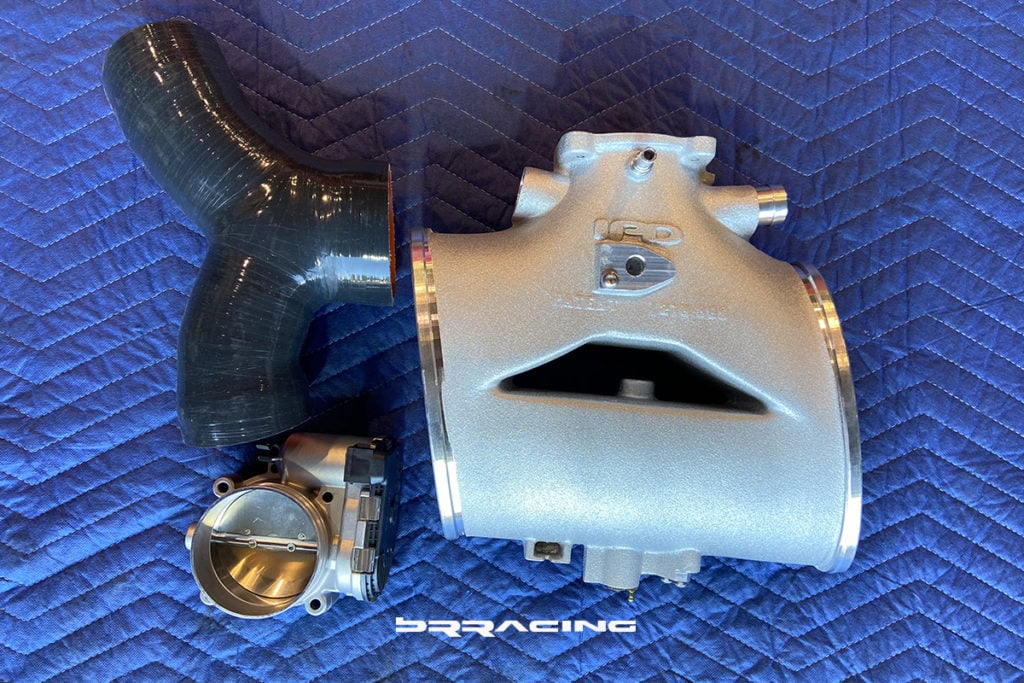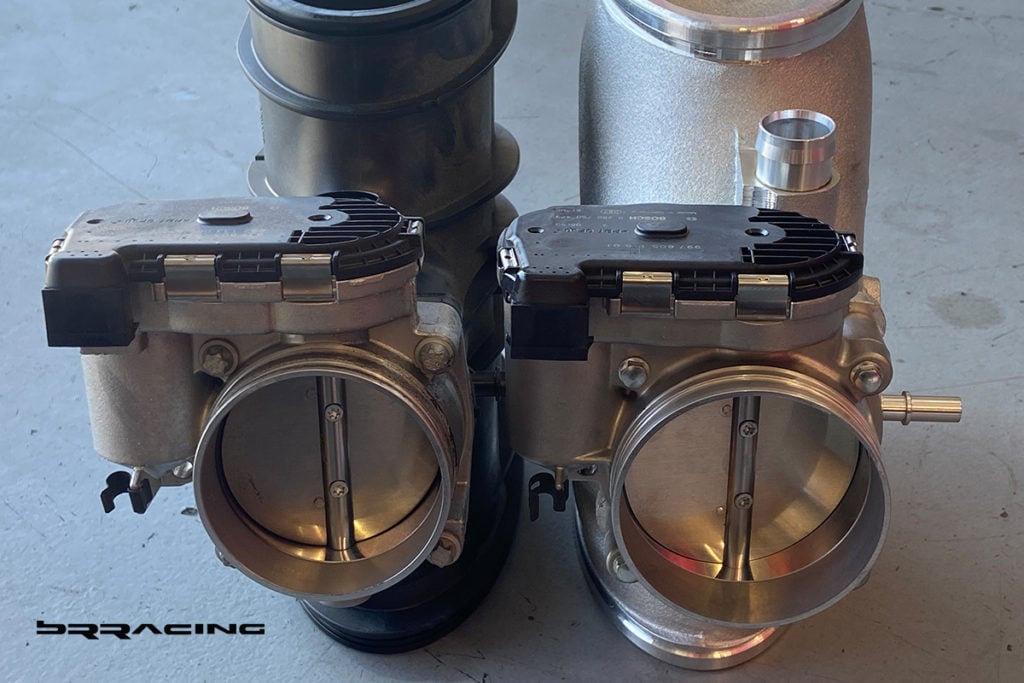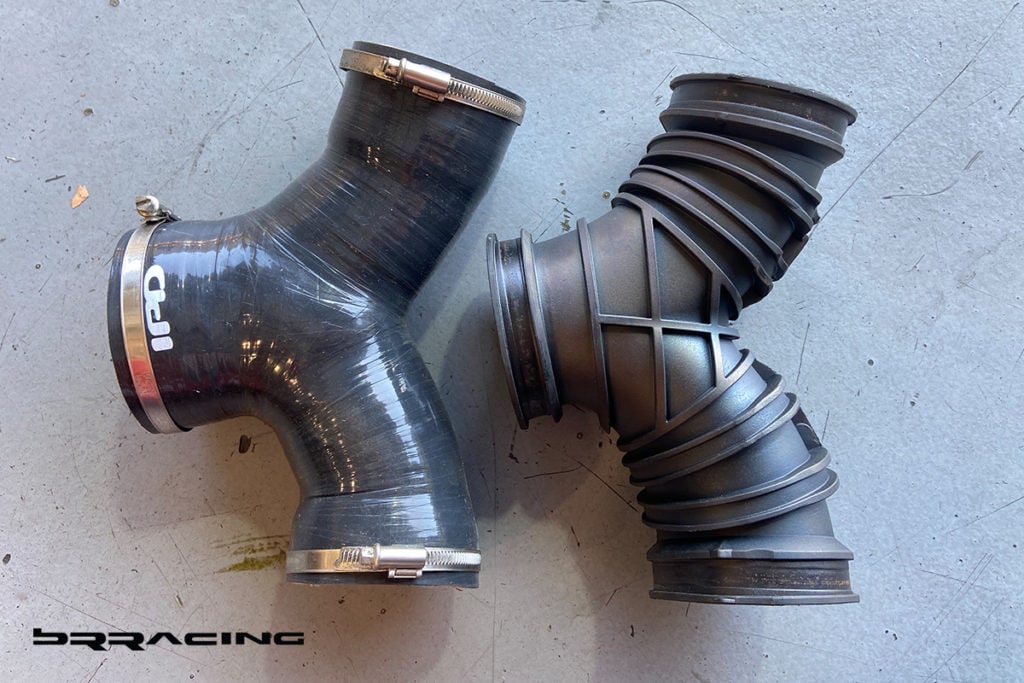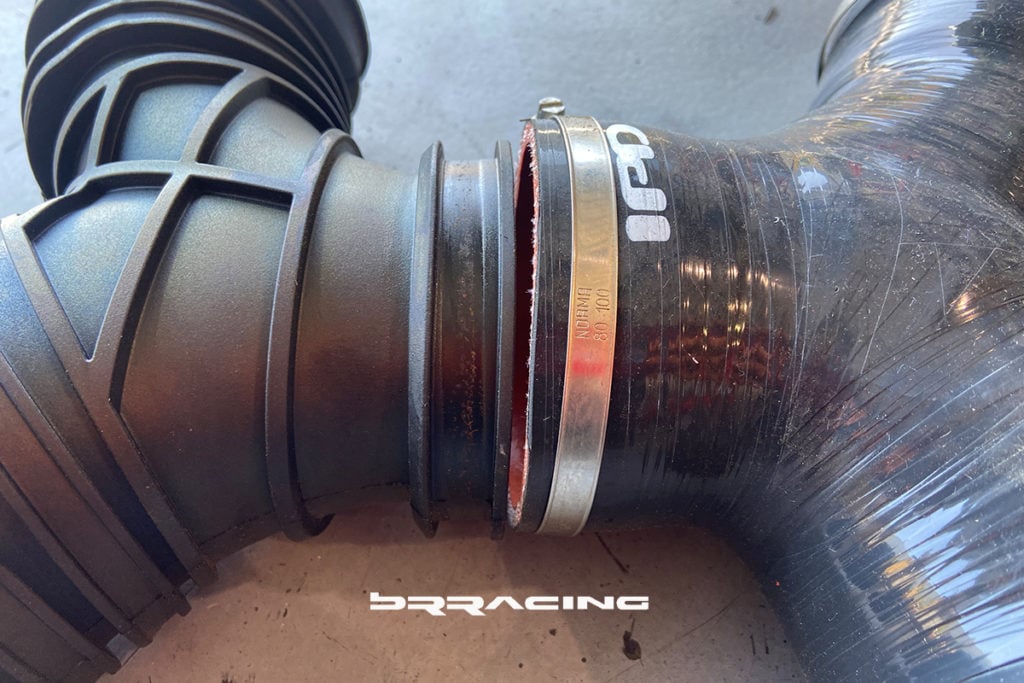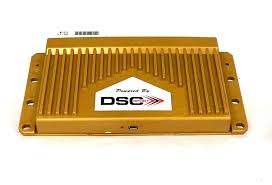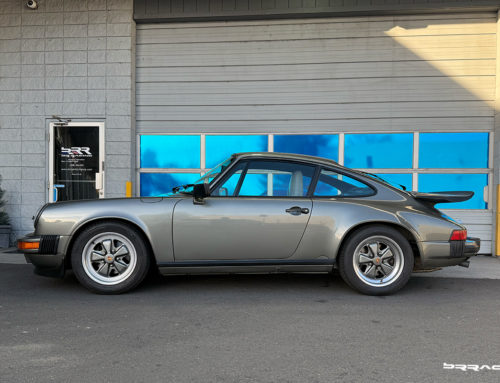Porsche 981 Boxster Spyder – Pretty & Quick
Each project has it own’s set of objectives. Some are to make the car fast, some are to make the car handle, some are to make it have a unique and stylish look. This cusotmer wanted a faster car, but one that has a wholestic design look. The good news is that the base platform in which he wanted to do these upgrades was nearly the perfect choice, the Porsche Boxster Spyder (981 version, w the normal flat-6 Porsche naturally aspirated engine). The Spyder is at the top of the food chain for the Boxsters, and shares many of the pieces suspension, interior, exterior, and engine w the Porsche GT4. A great platform to work from.
LOOKS
The newer Porsche 981 Boxster Spyder has looks that were much improved over the prior generation 986 and 987. The Boxster Spyder then adds to this base look with some added design elements (splitter, diffuser, removeable convertible top). But…but, it still didn’t look like it was meant to be. That leaves the door open for some stylin upgrades.
It needed a integrated look.
We started w the wind deflectors (these are a must for almost any Porsche), then needed to match the car. If we did the wind deflectors, then we needed to make the mirror caps match as well (the integrated / complete look).
Continuing the “integrated / wholestic” approach, the next element that struck us as not being part of the whole was the rear diffuser, especially on this red Porsche. It neither stood out, nor it did it look like part of the whole. So, we painted the rear diffuser and surrounding elements body color, now it looks like it was meant to be there.
Now the car is starting to come together.
There were a couple of approaches we contemplated on the next step. How far do you carry this theme, of the completely integrated look? Do we do the inside of the steering wheel? The interior already has the red stitching on the uphosltry, the red main door pulls (cloth fabric rather than actual door handles) and the interior accent pieces are all red. We didn’t want to go too far, and loose the design look, but we wanted to take it that one step beyond what is easy for the factory to do, and make it look better. The car also had been ordered w the Porsche Sport Carbon Fiber seats, w the black seat belts and the red stitching.
One of those other elements that we debated was the main roll hoops and the surrouding black plastic pieces. Nothting here said it was part of the whole, but at the same time, doing all the plastic would, in our view, be too much.
Therefore, we decided to just do the main roll hoops.
One of the steps you have to caution yourself when trying to add to the overall look is that you don’t go too far, and make it loose its character and distinctness. Along these lines, we thought about also doing all the badging. We made a mixed decision here…trying to integrate, while still trying to find design touches and accents. We did the rear badging in black, and left the SPYDER logo on the side near the convertible top in chrome.
Now that the car has the full looks (worked nice that the car came w the red brake calipers, so no need to do anything there). So, now need to add some power to make it perform as well as it looks.
POWER
Porsche has followed a very well defined plan for the Boxster Spyder and the Cayman GT4. They have the larger engine, a “de-tuned” 911 engine. Therefore, the same is true with how to upgrade the engine to get more power. The intake has been restricted, the exhaust has been restricted, and the engine has been “de-tuned” from its capability.
Therefore, those are the low hanging fruit. The exhaust, the intake, and the tune.
For the exhaust, we have limitations here in CA, as we can’t really do the full exhaust suite….we would like to, but we run into issues if we swap out the catalytic convertors. Therefore, this customer elected to just do the rear muffler section. Still impoves the flow, the sound…which is intoxicating and engaging….dragging you into driving the car harder and harder, just to listen to the exhaust sing.
The exhaust we chose to go with for this car was the SOUL Performance system. We love everything about this solution. The fit, the finish, the quality, the SOUND.
Here is the stock setup:
Besides seeing what this looks like, you can also see that there is a fair amount of weight in the stock exhaust system. The car had the Porsche Sport Exhaust (PSE), so we wanted to retain the valvetronic nature when swapping out the exhaust system. Here is the new SOUL Performance exhaust system, which includes the “over the axle” pipes.
As mentioned before, the fit, finish, design of the SOUL Performance system is top notch. You have a choice even of what type of tips. The valvetronic element is very easy to see, as is the natural flow of the exhaust when the valves are either in open mode or closed mode.
Now you can see the dfference with the new system installed:
Lighter, great fitment in all areas, tips are perfectly placed, better flow, and great sound. Check.
INTAKE
The next piece of low hanging fruit, meaning an easy upgrade with diret results, lies in the intake system. Here Porsche limited the flow to constrict the power, especially at the higher RPMs. The flow is restricted at the throttle body and the intake plenum. When such an issue / opportunity exists, the aftermarket manufacturers rise to the occassion, and produce just what is needed. The next step is selecting the right stuff.
Knowing this, and having tried this same approach on the other GT4s, the approach and solution have been proven. Replace the throttle body w the GT3 unit (this biggest unit there is), and replace the plenum w the IPD unit.
Here are some pics of the new elements. When addressing “intake flow”, you need to be wholistic in the approach. Changing just one item does not solve the restriction. We see a lot of customers do this on other cars, they will just do a part of the intake (like adding a “cold air intake” (or what they think is a cold air intake, which many times is not, or in changing the intake filter (the filter is not restrictive, the stock filters do a fine job)), but not the whole system. Once you increase the flow / volume, you have to do it from there all the way to the intake port.
Here is the new GT3 throttle body and the IPD plenum:
As just mentioned, it needs to be a whole solution, not just pieces. The IPD solution provides you the connecting parts as well.
Let’s take a little closer look at each of these pieces to see if they really are bigger, different, like the thottle bodies (stock Boxster Spyder vs the GT3 unit). The size / volume is quite a bit different (bigger) w the GT3 throttle body.
So, if we are increasing the flow at the throttle body, how about before it? The intake tube from the airbox to the throttle body needs an upgrade as well:
Why we love the IPD plenum, is that they didn’t just make a bigger one. They made a better one. Dealing w air flow, it is often the little details that make the difference. The shape provides less disruption to the natural air flow, in that it splits the flow and more readily directs it to the intake manifoldds. Any time you change the direction of the airflow, you lose efficiency and velocity / pressure. We want to stuff the combustion chambers w as much air as possible. The more air we can stuff into the cylinder, the more we can increase the amount of fuel. The more fuel, the more power. Even in the intake tube image above, you can see how the flow has been improved over the stock unit.
There has been huge amounts of research in air flow in how to deal w the flow and optimize it. When air flows over a surface, there is a different laminar flow characteristic, almost like friction. This slower flow along the surface then causes turbulence and internal vortices…these are what slows the flow. Therefore, something needs to be done to increase the flow, or lessen the turbulence. IPD has implemented the dimpled surface (think of a golf ball surface), Again, its the little things, all put together that make a difference.
Here is a complete view of the engine / transmission, and you can visually see where the intake restrictions lie, and how the complete IPD solution solves this.
Now, while that addressed the original objectives, we can’t just leave it at that. There is always more that can be done.
ENGINE TUNE
The Porsche Boxster Spyder has the 3.8L naturally aspirated engine. Pretty amazing just like that. But, now that we have improved / lessened the restrictions, we can ask even more from the engine. For the most part, engines will now self adapt. But, we’re not looking for it to just adapt, we want MORE.
Enter the tuing world. There are a couple of well known tuners out there. For Porsche, our two favorites are COBB and APR. Of these, COBB is the better choice for the Boxster Spyder. Easy to install, the ability to switch modes with the hand held tuner unit. You can select from a variety of “maps”. For this car, due to it being in CA, that means we are selecting the Stage 1 / 91 octane “map”. Presto, instant upgrade of power across the whole power band.
SUSPENSION
For the most part, we don’t like to push solutions on our customers. We want to be there to be a consultative service, to help customers evaluate options / budgets / impacts, so that they can make the best decision.
But, every now and then, there is a product that is soooooo good, that we want all to know. We believe the PASM / DSC module is just that. It’s a WIN-WIN solution. If your car has PASM (active shocks, active stability management), then you HAVE TO HAVE this in your car. It softens the normal ride, it firms up the agrressive ride when you want it. Just a push of the button on the center console changes the suspension to what you want. You want a comfortable ride (like for communiting), then chose “comfort” mode. You want to go chase motorcycles or go to the track, then you can choose either PASM, Sport, or Sport + mode, and it will transform your suspension and handling.
DSC Module
There…we have it. All the boxes are checked. The results proven. The car complete.
BRracing, creating amazing results for our customers.









